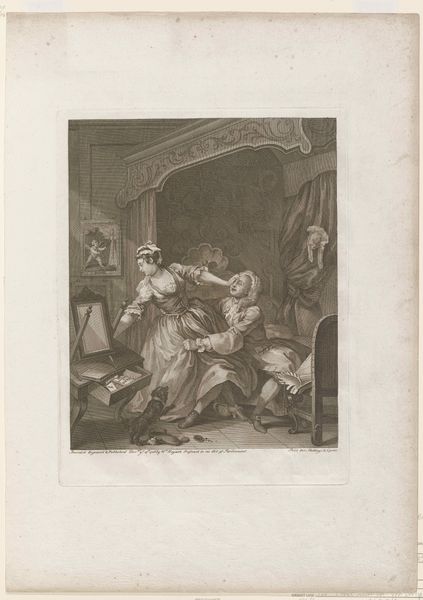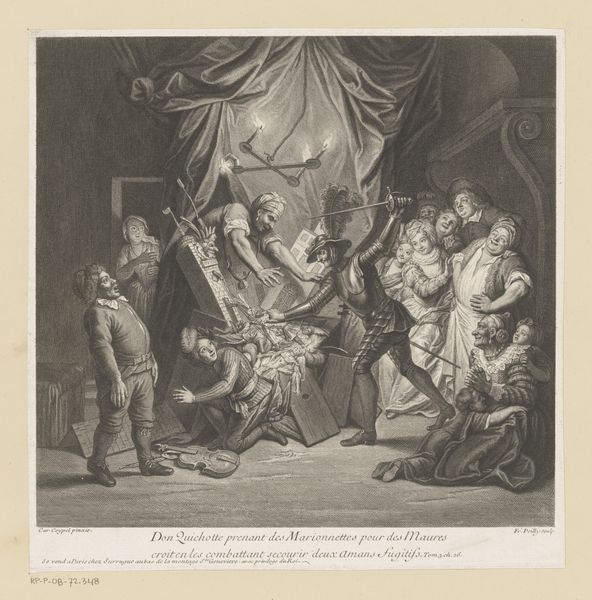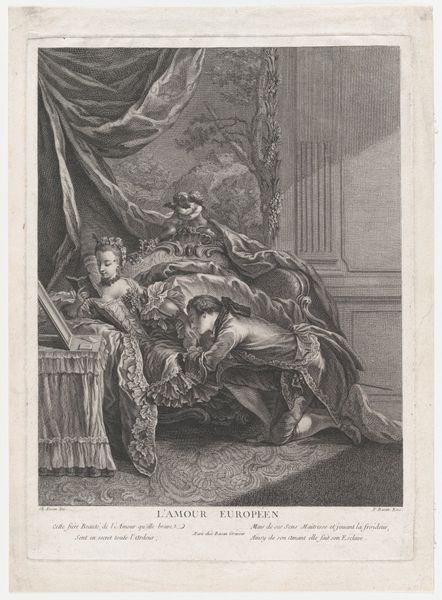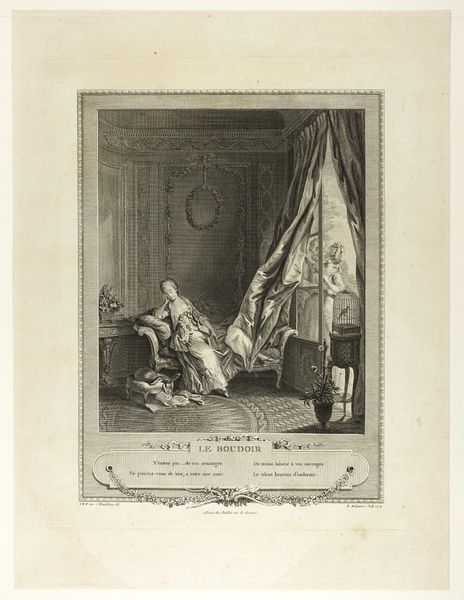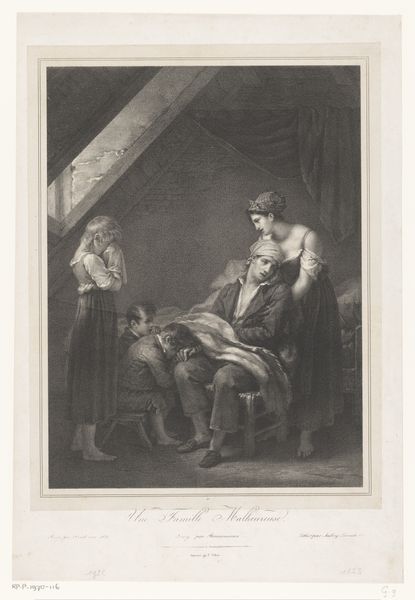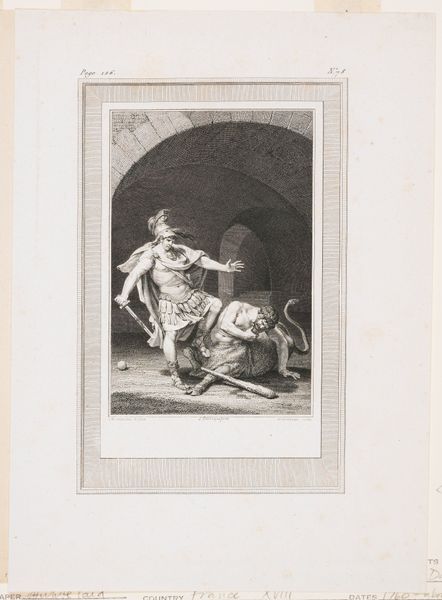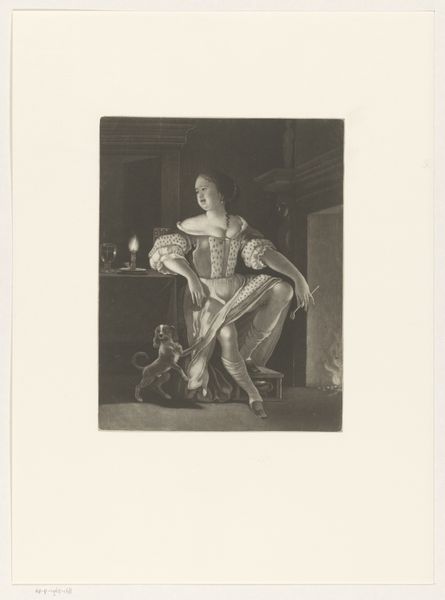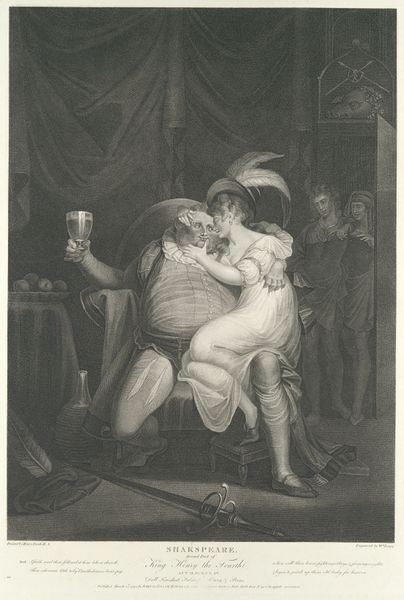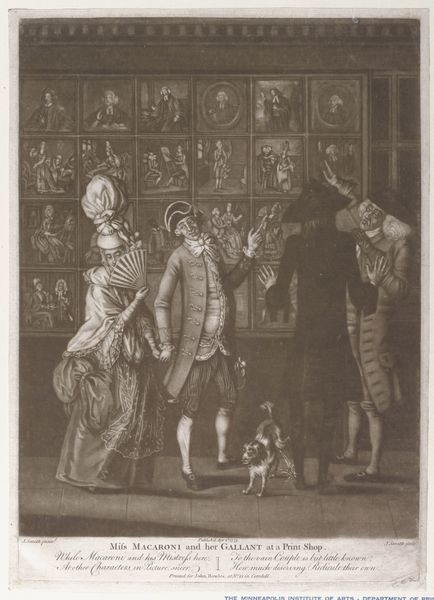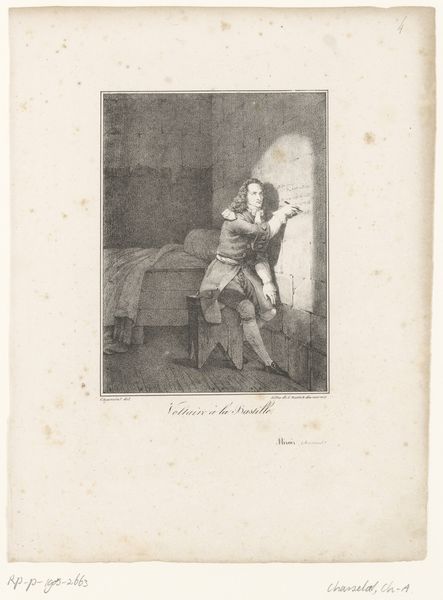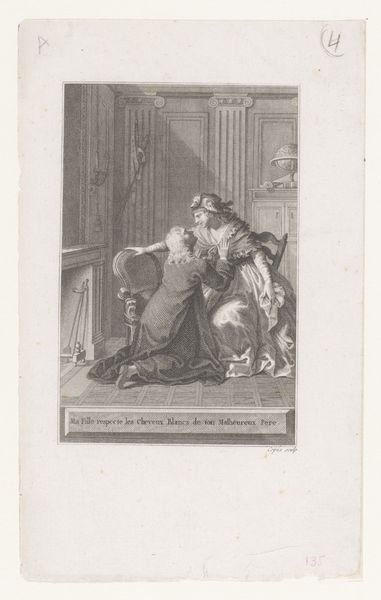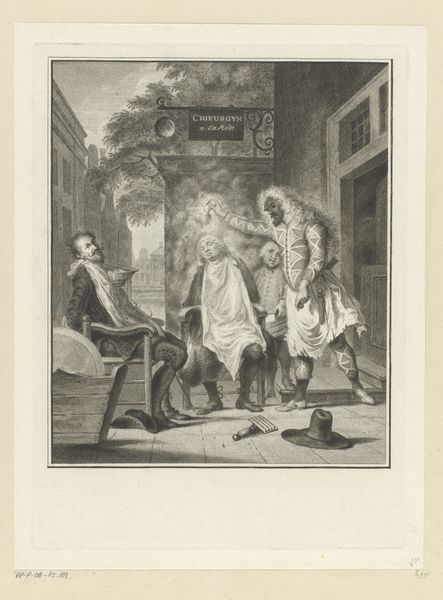
The Palace at Westminster: King Henry and the Prince of Wales (Shakespeare, King Henry IV, Part 2, Act 4, Scene 4) 1795 - 1852
0:00
0:00
drawing, print, engraving
#
drawing
#
narrative-art
# print
#
figuration
#
romanticism
#
history-painting
#
engraving
Dimensions: Plate: 22 5/8 × 16 1/16 in. (57.4 × 40.8 cm) Sheet: 27 13/16 × 21 5/8 in. (70.7 × 55 cm)
Copyright: Public Domain
Curator: Before us, we have Robert Thew's engraving, "The Palace at Westminster: King Henry and the Prince of Wales," dating roughly from 1795 to 1852, inspired by Shakespeare's King Henry IV. Editor: The immediate impression is of youthful energy poised against the stillness of illness. The dark tones emphasize the drama, almost melodramatic. Curator: It depicts the moment Prince Henry believes his father, King Henry IV, has died and reaches for the crown beside him. It’s rife with patriarchal and colonial tensions when seen through the lens of power, inheritance, and dynastic anxiety, echoing concerns with British monarchy and imperial ambitions of the era. Editor: Indeed, the placement of the crown as a material object, its weight and sheen practically tangible, shows how it visually signifies power, inheritance, but it is simply made of gold and jewels extracted from somewhere by someone. How was this engraving reproduced? The act of engraving and printing itself – the materials, the labour - contribute to its meaning. Curator: Absolutely. This image plays into anxieties around legitimate rule but what is lost often when people describe this is that legitimate rule isn't "natural", so we can challenge concepts that the power of this one person in this one time, based on their blood is the ideal scenario. Editor: Yes! It focuses the lens on the crown’s materiality and its inherent relationship with labour. The making of the image – the printing presses, the engraver’s hand, all the workers involved – they underscore the processes that help disseminate the drama to a broader audience. Who purchased these? How were they distributed? Curator: The print, its reproduction, further democratizes the access of Shakespearean narratives to broader social spheres but one wonders if the working classes in reality were actually reflected at all in this world the artist makes through the figure of the Prince. Editor: The details Thew employs in terms of material reality are definitely powerful when understood in terms of what they tell us about social stratification. Curator: Agreed. Seeing the broader strokes reveals Thew's strategic communication for social mobility via material things of power, in the social stratification itself. Editor: It urges one to see a direct linkage to the making, the consumption, and the sociopolitical implications.
Comments
No comments
Be the first to comment and join the conversation on the ultimate creative platform.

